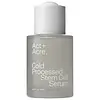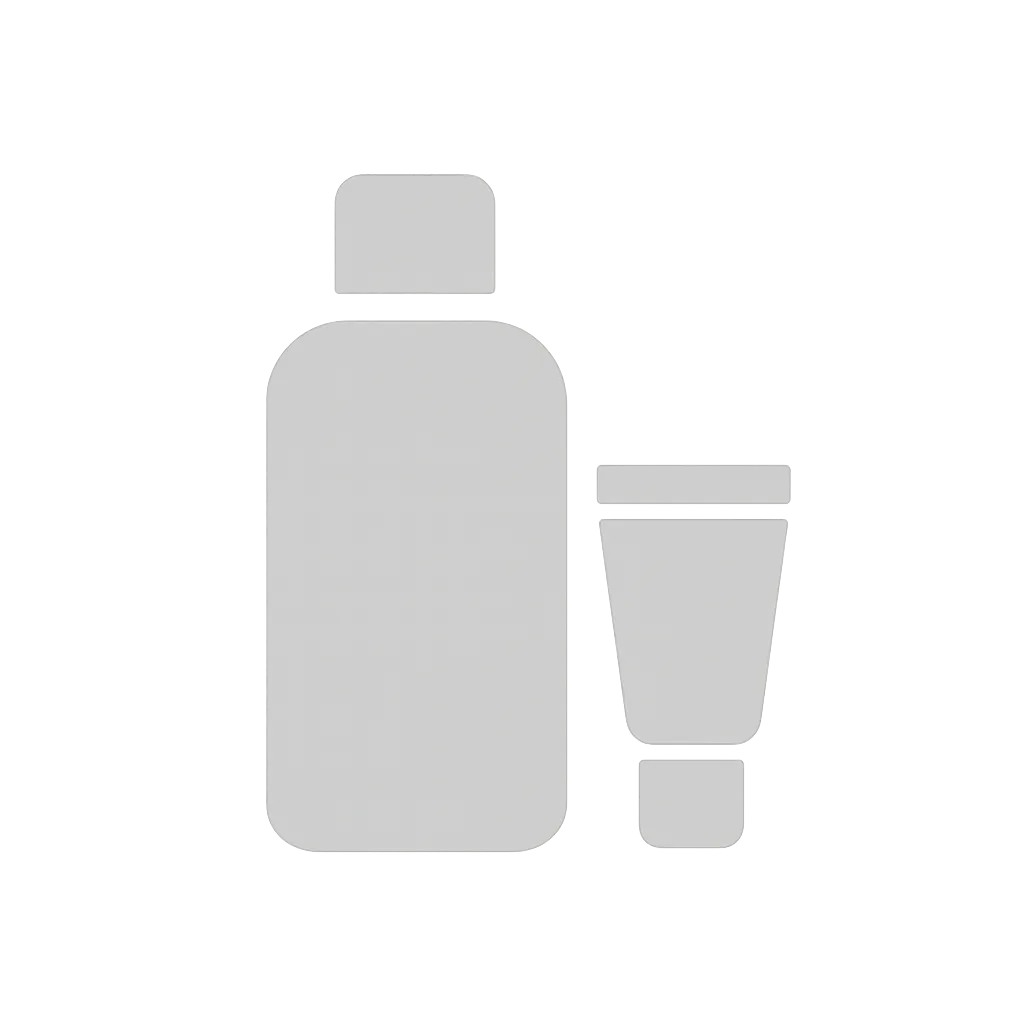What's inside
What's inside
 Key Ingredients
Key Ingredients

 Benefits
Benefits

 Concerns
Concerns

No concerns
 Ingredients Side-by-side
Ingredients Side-by-side

Water
Skin ConditioningGlycerin
HumectantButylene Glycol
HumectantAloe Barbadensis Leaf Juice
Skin ConditioningPentylene Glycol
Skin ConditioningPropanediol
SolventXanthan Gum
EmulsifyingGlucosamine Hcl
Caprylyl Glycol
EmollientGlycereth-26
HumectantPisum Sativum Extract
Skin ConditioningMalus Domestica Fruit Cell Culture Extract
Skin ConditioningCarbomer
Emulsion StabilisingBambusa Vulgaris Leaf/Stem Extract
HumectantEthylhexylglycerin
Skin ConditioningSodium Hyaluronate
HumectantTetrasodium Glutamate Diacetate
Phenoxyethanol
PreservativeQuercus Petraea Fruit Extract
Skin ConditioningCollagen
MoisturisingLecithin
EmollientLeuconostoc/Radish Root Ferment Filtrate
AntimicrobialSodium Benzoate
MaskingSodium Hydroxide
BufferingPotassium Sorbate
PreservativeSodium Glycolate
BufferingSodium Formate
BufferingCitric Acid
BufferingWater, Glycerin, Butylene Glycol, Aloe Barbadensis Leaf Juice, Pentylene Glycol, Propanediol, Xanthan Gum, Glucosamine Hcl, Caprylyl Glycol, Glycereth-26, Pisum Sativum Extract, Malus Domestica Fruit Cell Culture Extract, Carbomer, Bambusa Vulgaris Leaf/Stem Extract, Ethylhexylglycerin, Sodium Hyaluronate, Tetrasodium Glutamate Diacetate, Phenoxyethanol, Quercus Petraea Fruit Extract, Collagen, Lecithin, Leuconostoc/Radish Root Ferment Filtrate, Sodium Benzoate, Sodium Hydroxide, Potassium Sorbate, Sodium Glycolate, Sodium Formate, Citric Acid
Water
Skin ConditioningPropanediol
SolventPentylene Glycol
Skin ConditioningPolyglyceryl-6 Caprylate
EmulsifyingNiacinamide
SmoothingPolyglyceryl-4 Caprate
EmulsifyingButylene Glycol
HumectantPanthenol
Skin ConditioningHydrolyzed Eruca Sativa Leaf
AntioxidantHydrolyzed Walnut Extract
AntioxidantSodium Gluconate
Skin ConditioningMenthol
MaskingCaffeine
Skin ConditioningMentha Piperita Oil
MaskingMenthyl Lactate
MaskingCaprylhydroxamic Acid
Vitis Vinifera Fruit Meristem Cell Culture
AntioxidantCitric Acid
BufferingSodium Benzoate
MaskingPotassium Sorbate
PreservativePanax Ginseng Root Extract
EmollientDextran
Acetyl Tetrapeptide-3
Skin ProtectingTrifolium Pratense Flower Extract
AstringentWater, Propanediol, Pentylene Glycol, Polyglyceryl-6 Caprylate, Niacinamide, Polyglyceryl-4 Caprate, Butylene Glycol, Panthenol, Hydrolyzed Eruca Sativa Leaf, Hydrolyzed Walnut Extract, Sodium Gluconate, Menthol, Caffeine, Mentha Piperita Oil, Menthyl Lactate, Caprylhydroxamic Acid, Vitis Vinifera Fruit Meristem Cell Culture, Citric Acid, Sodium Benzoate, Potassium Sorbate, Panax Ginseng Root Extract, Dextran, Acetyl Tetrapeptide-3, Trifolium Pratense Flower Extract
Ingredients Explained
These ingredients are found in both products.
Ingredients higher up in an ingredient list are typically present in a larger amount.
Butylene Glycol (or BG) is used within cosmetic products for a few different reasons:
Overall, Butylene Glycol is a safe and well-rounded ingredient that works well with other ingredients.
Though this ingredient works well with most skin types, some people with sensitive skin may experience a reaction such as allergic rashes, closed comedones, or itchiness.
Learn more about Butylene GlycolCitric Acid is an alpha hydroxy acid (AHA) naturally found in citrus fruits like oranges, lemons, and limes.
Like other AHAs, citric acid can exfoliate skin by breaking down the bonds that hold dead skin cells together. This helps reveal smoother and brighter skin underneath.
However, this exfoliating effect only happens at high concentrations (20%) which can be hard to find in cosmetic products.
Due to this, citric acid is usually included in small amounts as a pH adjuster. This helps keep products slightly more acidic and compatible with skin's natural pH.
In skincare formulas, citric acid can:
While it can provide some skin benefits, research shows lactic acid and glycolic acid are generally more effective and less irritating exfoliants.
Most citric acid used in skincare today is made by fermenting sugars (usually from molasses). This synthetic version is identical to the natural citrus form but easier to stabilize and use in formulations.
Read more about some other popular AHA's here:
Learn more about Citric AcidPentylene glycol is typically used within a product to thicken it. It also adds a smooth, soft, and moisturizing feel to the product. It is naturally found in plants such as sugar beets.
The hydrophilic trait of Pentylene Glycol makes it a humectant. As a humectant, Pentylene Glycol helps draw moisture from the air to your skin. This can help keep your skin hydrated.
This property also makes Pentylene Glycol a great texture enhancer. It can also help thicken or stabilize a product.
Pentylene Glycol also acts as a mild preservative and helps to keep a product microbe-free.
Some people may experience mild eye and skin irritation from Pentylene Glycol. We always recommend speaking with a professional about using this ingredient in your routine.
Pentylene Glycol has a low molecular weight and is part of the 1,2-glycol family.
Learn more about Pentylene GlycolPotassium Sorbate is a preservative used to prevent yeast and mold in products. It is commonly found in both cosmetic and food products.
This ingredient comes from potassium salt derived from sorbic acid. Sorbic acid is a natural antibiotic and effective against fungus.
Both potassium sorbate and sorbic acid can be found in baked goods, cheeses, dried meats, dried fruit, ice cream, pickles, wine, yogurt, and more.
You'll often find this ingredient used with other preservatives.
Learn more about Potassium SorbatePropanediol is an all-star ingredient. It softens, hydrates, and smooths the skin.
It’s often used to:
Propanediol is not likely to cause sensitivity and considered safe to use. It is derived from corn or petroleum with a clear color and no scent.
Learn more about PropanediolSodium Benzoate is a preservative. It's used in both cosmetic and food products to inhibit the growth of mold and bacteria. It is typically produced synthetically.
Both the US FDA and EU Health Committee have approved the use of sodium benzoate. In the US, levels of 0.1% (of the total product) are allowed.
Sodium benzoate works as a preservative by inhibiting the growth of bacteria inside of cells. It prevents the cell from fermenting a type of sugar using an enzyme called phosphofructokinase.
It is the salt of benzoic acid. Foods containing sodium benzoate include soda, salad dressings, condiments, fruit juices, wines, and snack foods.
Studies for using ascorbic acid and sodium benzoate in cosmetics are lacking, especially in skincare routines with multiple steps.
We always recommend speaking with a professional, such as a dermatologist, if you have any concerns.
Learn more about Sodium BenzoateWater. It's the most common cosmetic ingredient of all. You'll usually see it at the top of ingredient lists, meaning that it makes up the largest part of the product.
So why is it so popular? Water most often acts as a solvent - this means that it helps dissolve other ingredients into the formulation.
You'll also recognize water as that liquid we all need to stay alive. If you see this, drink a glass of water. Stay hydrated!
Learn more about Water